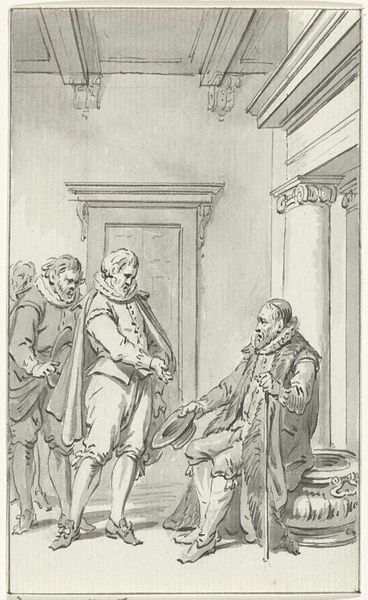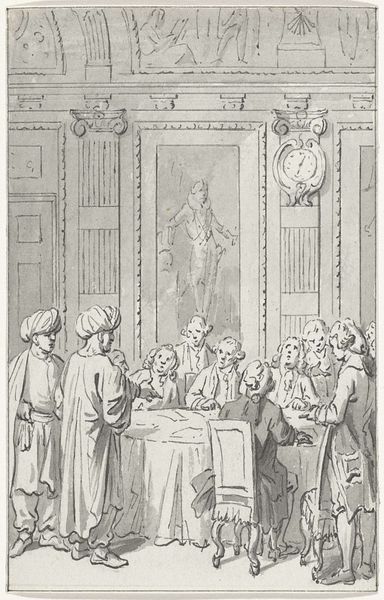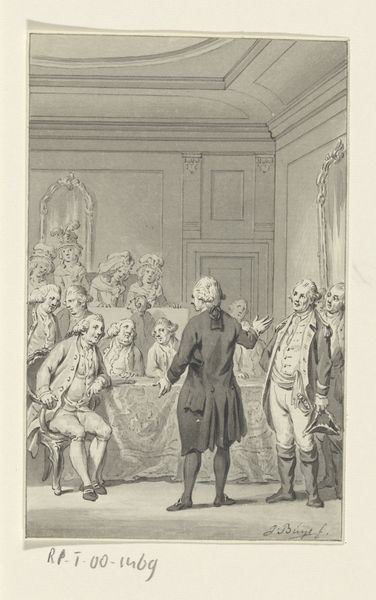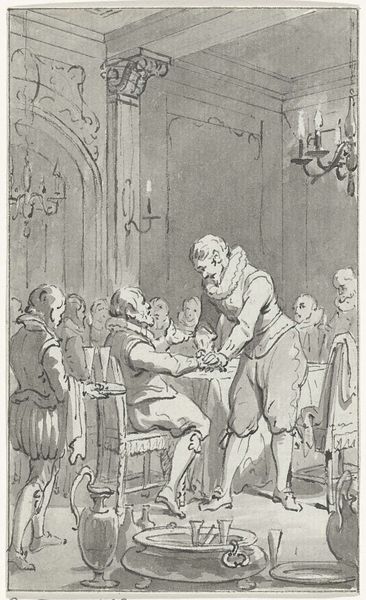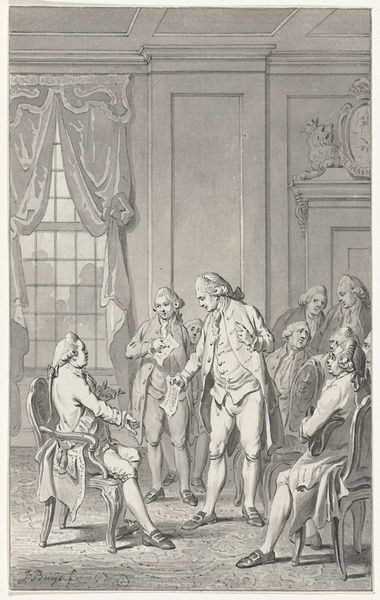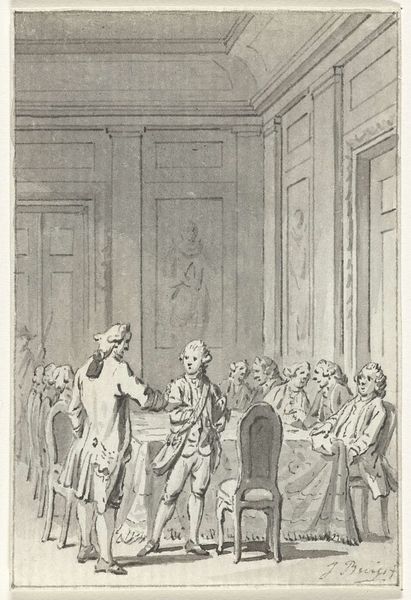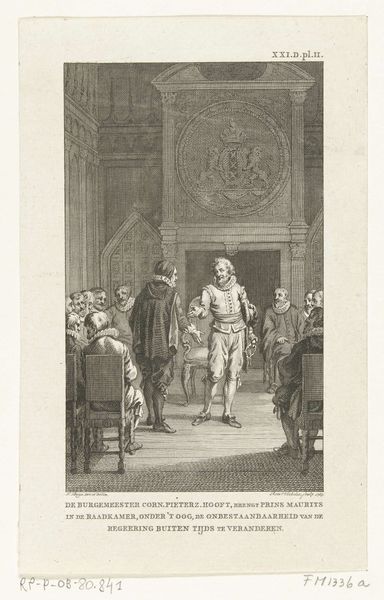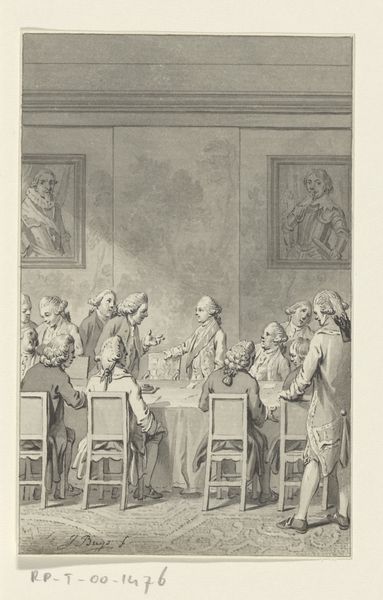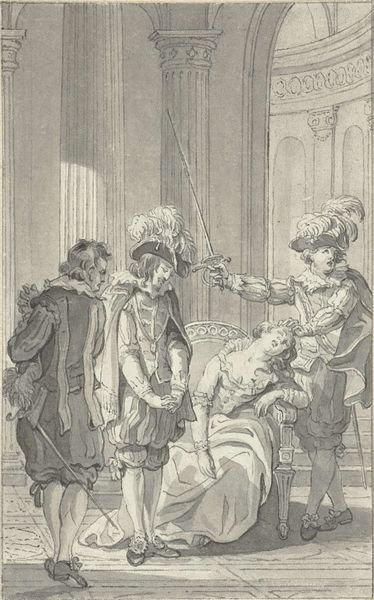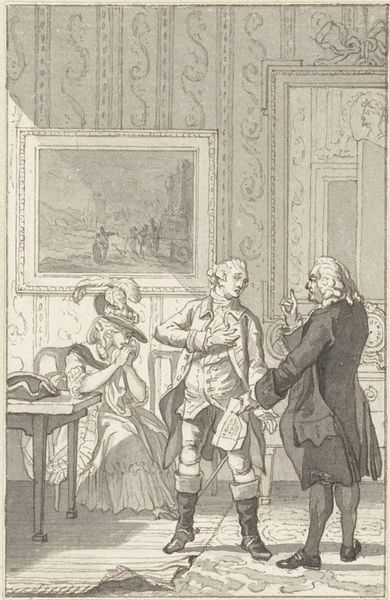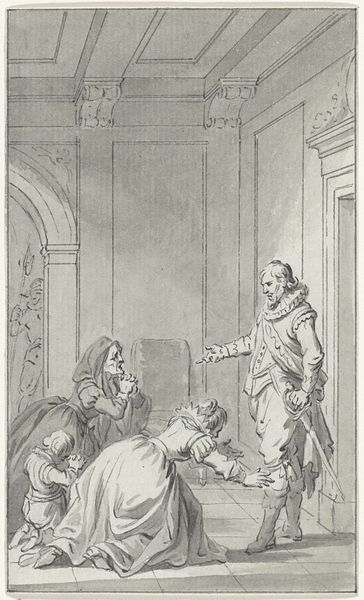
Cornelis Pietersz. Hooft spreekt Prins Maurits aan over de regeringsverandering van Amsterdam, 3 november 1618 1779 - 1784
0:00
0:00
jacobusbuys
Rijksmuseum
#
comic strip sketch
#
imaginative character sketch
#
quirky sketch
#
cartoon sketch
#
personal sketchbook
#
idea generation sketch
#
sketchwork
#
thumbnail sketching
#
sketchbook drawing
#
storyboard and sketchbook work
Dimensions: height 148 mm, width 89 mm
Copyright: Rijks Museum: Open Domain
Curator: Let’s have a closer look at this intriguing sketch hanging here in the Rijksmuseum. It’s Jacobus Buys’ study, dating from 1779-1784, for a history painting depicting Cornelis Pietersz. Hooft addressing Prince Maurits about the change in Amsterdam's government on November 3, 1618. Editor: Immediately, I'm struck by the image's subdued tone. The monochrome wash lends a feeling of seriousness and perhaps a touch of somber reflection to the scene. It reads more like a prelude, hinting at the tensions to come. Curator: Indeed. The artist's use of diluted ink wash suggests the complex power dynamics involved. There’s a fragility to the execution itself, fitting when we consider that this sketch reflects political change, a shift in control of resources and power. How those are exchanged. The almost ghostly gathering hints at instability and unease around the change of Amsterdam’s leadership. Editor: That somber tone is intensified for me when I think of Prince Maurits’ reputation. There is always more going on behind the stoic face of power than appears, right? The large painted or sculpted image behind them has an ethereal, classical feel. What's your sense of the story there? Curator: The artist certainly positions the story within a grand visual tradition, linking it to larger narratives of governance and moral authority. Even at this early stage, the artist anchors the composition with what he probably considered crucial iconography. But my focus shifts toward the paper and ink - these became tools for reflecting and enacting political changes. Editor: But isn’t the very act of depiction a statement? By choosing this scene, doesn't Buys invite viewers to remember Amsterdam's own narrative, and the ever-turning cycles of authority and civic duty? The figures surrounding Hooft and Maurits form an interesting visual Greek chorus of concerned parties. Their positions alone suggest the tension. The arrangement focuses on power, reminding us that the social structures we see as stable were built in moments just like this. Curator: I would agree, but again emphasize this is also a moment in Buys’ career: here is an artisan making a strategic visual claim about history using relatively inexpensive materials, crafting narrative for an emergent viewing public that is starting to consider this time in the past. Editor: Precisely. A blend of symbolic representation and concrete artistic action that brings forth a fascinating perspective. Curator: A powerful interplay between subject matter, symbolism, and the social reality of artistic creation, as ever.
Comments
No comments
Be the first to comment and join the conversation on the ultimate creative platform.
